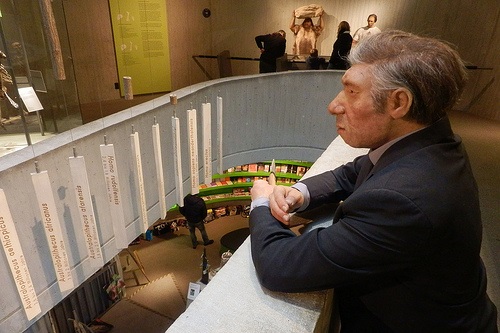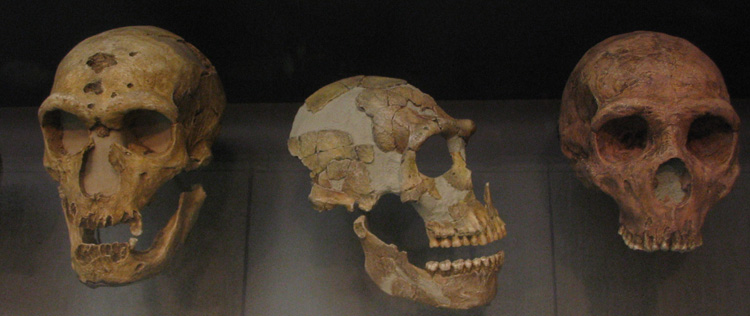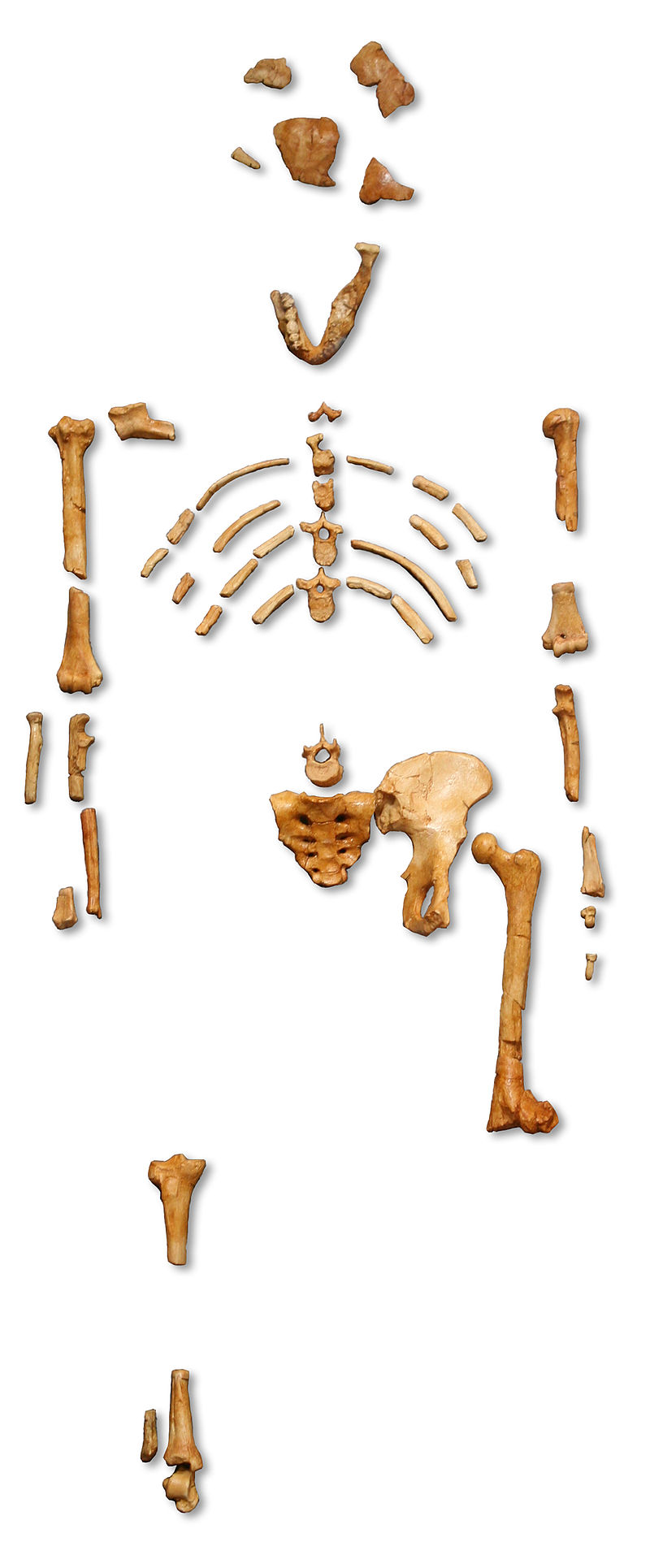I vividly remember my anthropology professor explaining how Raymond Dart is credited with discovering the first Australopithecine in South Africa 1924— a strange primate that walked on two legs some 3 million years ago. Technically, the real discoverers were miners who were instructed to bring anything strange they found to Dr. Dart’s attention during the course of their excavations. After explaining the discovery of the Taung Child as it is called, my professor changed his tone to storytelling mode. Dart wanted to make casts of the spectacular “career-making” fossil in England just in case something catastrophic happened to the actual remains. Dart was unable to go to London at the time, so his wife Dora was responsible for transporting the Taung Child to the lab in London. After arriving in the city, Dora took a cab to her hotel, but accidentally forgot the box with the skull in the backseat of the cab. The Taung Child then got a whirlwind tour of London. Eventually, the taxi driver discovered the box with the skull, assumed it was the head of a baby, and immediately called the authorities. My professor ended the story abruptly by stating that Dart and his wife divorced soon thereafter.
Paleoanthropology
Paleoanthropology is a specialized field in biological anthropology that is interested in human origins. This subject is investigated through two main avenues—the study of ancient fossils and genetics. Paleoanthropologists group ancient species into taxonomic groups (just like modern primates are classified in taxonomic groups) according to their morphology and sometimes their genetic makeup. This is done in order to understand the evolution, or change over time, in the human species.
Fossils are simply the remains of once-living organisms, whose tissues (usually bones and teeth) have been replaced by rock. Fossils only form when the organism was quickly buried and conditions are ideal. As a result, the fossil record represents only a small fraction of the populations that were once living. Paleoanthropologists also group species based on their genetics. This approach is only possible when tissues have not been fully mineralized or fossilized. This sparsity of the fossil record and the lack of preserved genetic material makes paleoanthropology a challenging discipline.
The processes by which species diversify today, as seen in the rock pocket mouse example, were also at play in the past. Mutations occur randomly and processes like natural selection and founder effect lead to diversification in species. These processes can lead to many branches that derive from a common ancestor. Change over time does not happen in a linear step-wise fashion, but rather in a branching fashion. In this chapter, we will look at some of those species that are thought to be ancestral to humans and why they are considered to be in the human family.
The Problem of Time
It was once thought that there wasn’t much time for a lot to happen on planet earth. Many scholars attempted to calculate the age of the Earth and/or people on the Earth using the available texts. Archbishop James Ussher’s calculation used, in part, the genealogies and reigns outlined in the Bible along with known dates of rulers. Ussher calculated the beginning of creation to 6004 BP. These calculations were taken very seriously, and even Sir Isaac Newton attempted an estimate.
While Ussher’s estimate was extremely influential, the physical evidence did not align well with this relatively short time frame. In the 1790s, John Frere, great-great-grandfather of famous paleoanthropologist Mary Leakey, excavated stone tools four meters (that’s about 12 feet) below the ground surface in ancient lake deposits in Suffolk, England. How did these artifacts get to be so deep in the ground. he wondered? Going against conventional thought, Frere concluded, “The situation in which these weapons were found may tempt us to refer them to a very ancient period indeed.” A similar situation was coming to light in France.
In the 1840s, a customs official named Boucher de Perthes uncovered stone tools associated with extinct elephant remains (mammoth) deep in ancient Somme River gravels in France. Like Frere, he concluded that the human presence in Europe must be much older than previously thought.
The problem was that people were finding artifacts and fossils in places where conventional thinking said they shouldn’t be. The deeper the geological layers, the older the fossils. These layers and the fossils they contain provide a blueprint for how life changed on earth since its beginnings around 4.5 billion years ago.
If the earth’s history were scaled to a year, humans appear in the last hour of the year. We now know based on geology and paleontology that the earth is much older than previously believed, and that humans and our cousins are relatively late arrivals.
So what kinds of things do paleoanthropologists look for in the fossil record? Paleoanthropologists of course look for fossils that have features of primates. In addition, they look for morphological traits that stand out as human in the field of other primates. Bipedalism, large brain to body size, a reduced face and changes in dentition (teeth) are features that are unique to humans in the primate order, and so paleoanthropologists use these to identify human ancestors, or hominins. Bipedalism is an especially important feature because it is the earliest to show up in the fossil record. All hominins are bipedal. Other human-like features like large brains, a reduced face, and changes in dentition, appear later in the fossil record.
Australopithecines
Some of the earliest and best understood hominins were Australopithecines, all of which have so far been discovered in Africa. There are several different species of australopithecines: Australopithicus afarensis, Australopithecus africanus, Australopithecus sebida and several others. Skeletal morphology (the form of the skeleton) reveals that Australopithecines walked on two legs as their main means of locomotion (moving around). No other primate besides humans is habitually bipedal. Chimps, bonobos, and gorillas can walk on two legs, but they are facultative bipeds, meaning the can walk on two legs for short periods. More typically, they propel themselves forward with their back legs, and support the front part of their bodies with their arms on curled-up hands—knuckle-walking.
The Hips Don’t Lie: Evidence for Bipedalism
The most famous Australopithecine is probably “Lucy”, an Australopithecus afarensis, discovered by Donald Johanson in Hadar, Ethiopia, in 1974. Lucy dates to about 3–3.5 million years ago (mya). She is remarkable not so much for her age, but for the completeness of her skeleton, with 40% of the bones being present. Lucy was about 20 years old and just under 4 foot when she died. Her brain was small (chimp sized), but she was clearly bipedal. Much of her postcranial skeleton (from the neck down) was present. Her pelvis, or hip bones, were especially informative. Lucy’s hip structure was more “bowl-shaped” like humans, and her femurs and knee joints angled inward, as in humans, to maintain a central center of gravity while walking upright. In contrast, chimpanzees have an elongated pelvis and femurs (upper leg bone) and knees that do not angle in. Therefore, the structure of the Australopithecine hip is an indicator of bipedalism.
Other indications of bipedalism in Australopithecines include the absence of a divergent big toe, as chimps have. The australopithecine toe is in line with the others making it adaptive to bipedal walking. The foramen magnum, which is the large opening for the spinal cord at the base of skull, is oriented downward, indicating the head sat atop the spinal column. Based on the arm bones, however, Australopithecines may have been partially arboreal.
Another piece of evidence for bipedalism in Australopithecines are the famed Laetoli footprints in Tanzania, discovered in 1978. At Laetoli, numerous animal prints have been preserved in volcanic ash. Following a volcanic eruption, hominins (and other creatures) walked on ash, creating footprints, which were subsequently buried by more ash and preserved. The hominin footprint showed no evidence of quadrupedalism or knuckle walking and were dated to around 3.6 million years ago. In all, 70 hominin footprints created by three individuals were discovered. In 2016, two new trackways at Laetoli were reported (Ichumbaki et al. 2016).
The shift to bipedalism is thought to be a response to an episode of drying in Africa in which tropical rainforests developed into savanna/woodland environments. Bipedalism may have been a response to this environmental shift. Several ideas about why bipedalism, which involves a radical restructuring of the body, was favored. Bipedalism entails costs, namely, stress on the lower spine, especially for pregnant females. It must therefore have conferred some advantage given this drawback. Bipedalism may have helped hominins see further, and it could have helped hominins to carry objects, transport food, and make tools. Bipedalism may also have enabled hominins to cool off better in the more open environment. Finally, bipedalism is more efficient than knuckle-walking for traveling long distances, potentially beneficial in a savanna/woodland environment. As it stands, we know that early hominins were bipedal, but are uncertain of the conditions under which this trait was selected for.
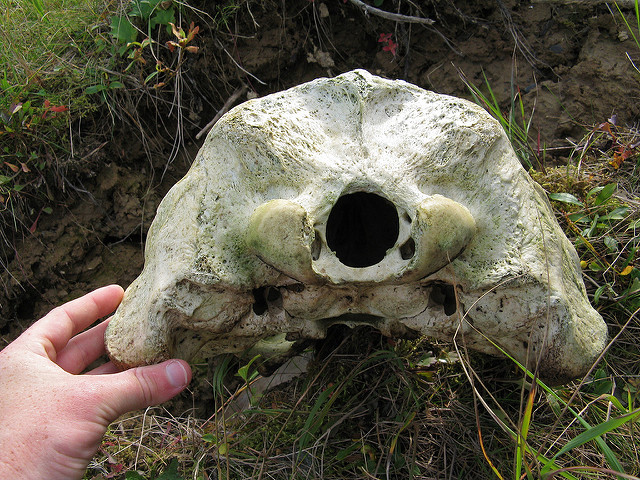
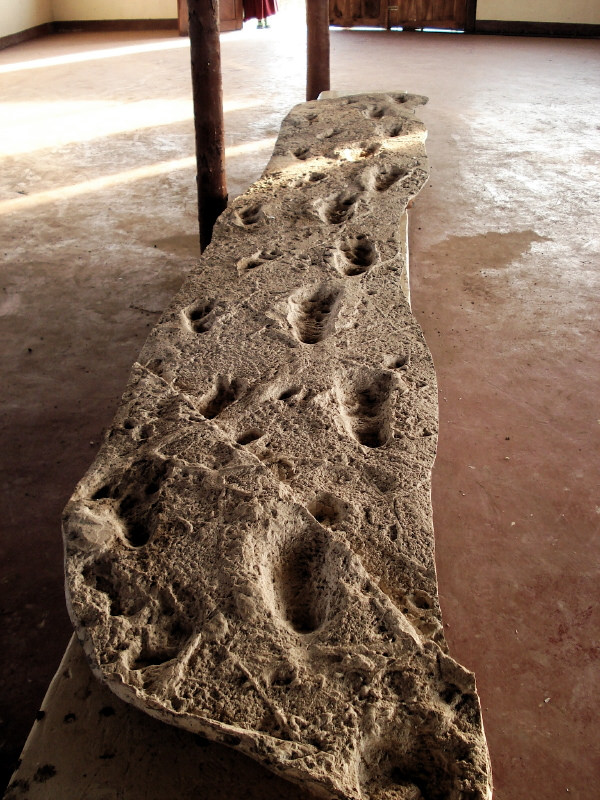
Homo habilis in Middle Earth
The first hominin that is sometimes classified into our own genus—the genus Homo—evolved in eastern Africa from Australopithecine populations around 2.1–1.5 million years ago and is called Homo habilis. The term Homo habilis roughly means “handy man” in Latin. Compared to australopithecines, habilis has more human-like features including the cranial capacity is larger and it has a less proganathic (projecting forward) face and a more vertical forehead.
Habilis is thought to be one of the first hominins to make and use stone tools—the Oldowan stone tool tradition, though stone tool cut marks are known from a pre-habilis site (Lovett 2010). Captive chimps have been shown by human trainers how to smash up long bones and use the splinters to puncture containers full of Kool-Aid. Monkeys produce flakes from smashing rocks, but so far, they haven’t used them to cut with. Making and using sharp edges seems to be within the performance capabilities of apes and even monkeys, but applying cutting edge technology in the wild is not in the repertoire. This propensity for making stone tools, is quite a bit more like modern humans than apes. It seems likely that cutting edge production in hominins was conditioned or selected for by a distinctive subsistence pattern, namely a strong dependence on hunting and/or scavenging meat. It is thought that Homo habilis scavenged for meat.
Habilis was fully bipedal, although it had not yet developed the modern human body proportions; it lacks the longer legs and shorter torso adapted for running and striding, that we see in later hominins. There are relatively few postcranial fossils from Homo habilis and different specimens show a range of variation, making it a controversial species. Many researchers lump them together with Australopithecines, considering them all to be a continuous, highly variable species. One paleoanthropologist has suggested that the world of early Homo was like Middle Earth in The Hobbit, inhabited by many very different looking bipedal primates.
Homo erectus
By about 2.0 to 1.8 mya, Homo erectus represents a continuation of anatomical and behavioral trends already present in Homo habilis—increased encephalization, stone tool use, reduced prognathism and teeth, and of course bipedalism. Erectus had a larger relative brain size than habilis, but still smaller than modern humans. Erectus also had a thick skull and massive browridge that continued, shelf-like, across the forehead.
